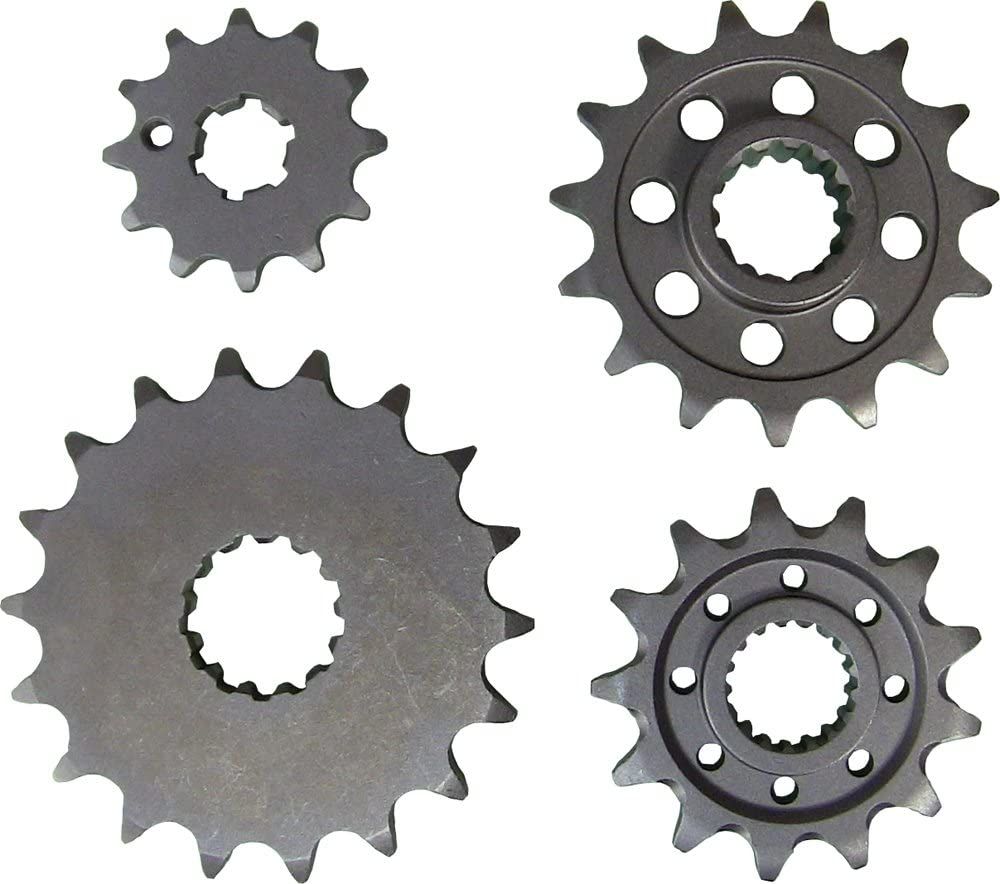Different sprocket sizes – larger or smaller – what is the impact on performance?
Final drive ratio.
Divide the rear sprocket tooth count by the front tooth count and you have the final drive ratio. For example: 35 / 15 = 2.33:1
If you want to change your gearing, you can calculate the impact of the change before you purchase the new sprockets.
For example: your bike cruises at 60 mph / 4,000 rpm and has a final drive ratio of 2.33:1 – if you want more acceleration, changing a 35 tooth sprocket for a 37 tooth sprocket and leaving 15 tooth on the front changes the ratio to 2.47:1 (37 / 15 = 2.47:1). Divide your cruising RPM by 2.33 and multiply by 2.47. Using the example from above, 4,000 rpm becomes 4,240 rpm at 60 mph. You’ll get more acceleration, but will sacrifice
Changing sprocket diameter can present problems – sprocket clearance on the front limits how big you can go, and you want to avoid going too small as the tight turn wears the chain prematurely. Additionally, you can run into problems with the chain slapping the swingarm if you go too small on front and/or rear. This is something you cannot always see when the bike is static, the combination of swing arm movement over the bumps, and acceleration or deceleration cause the chain to tag the top OR bottom of the swingarm.
Changing sprocket sizes may effect chain length. As roughly 1/2 of each sprocket has chain touching it, each tooth added to stock sizes will require approximately 1/2 link of additional chain. Increasing total teeth by one or two teeth can usually be accommodated by moving the rear axle forward slightly and keeping the stock chain length – but if you start changing sprocket sizes more than one or two teeth, you will need to increase chain length. Going up four teeth will require a chain 2 links longer.




Leave a Reply